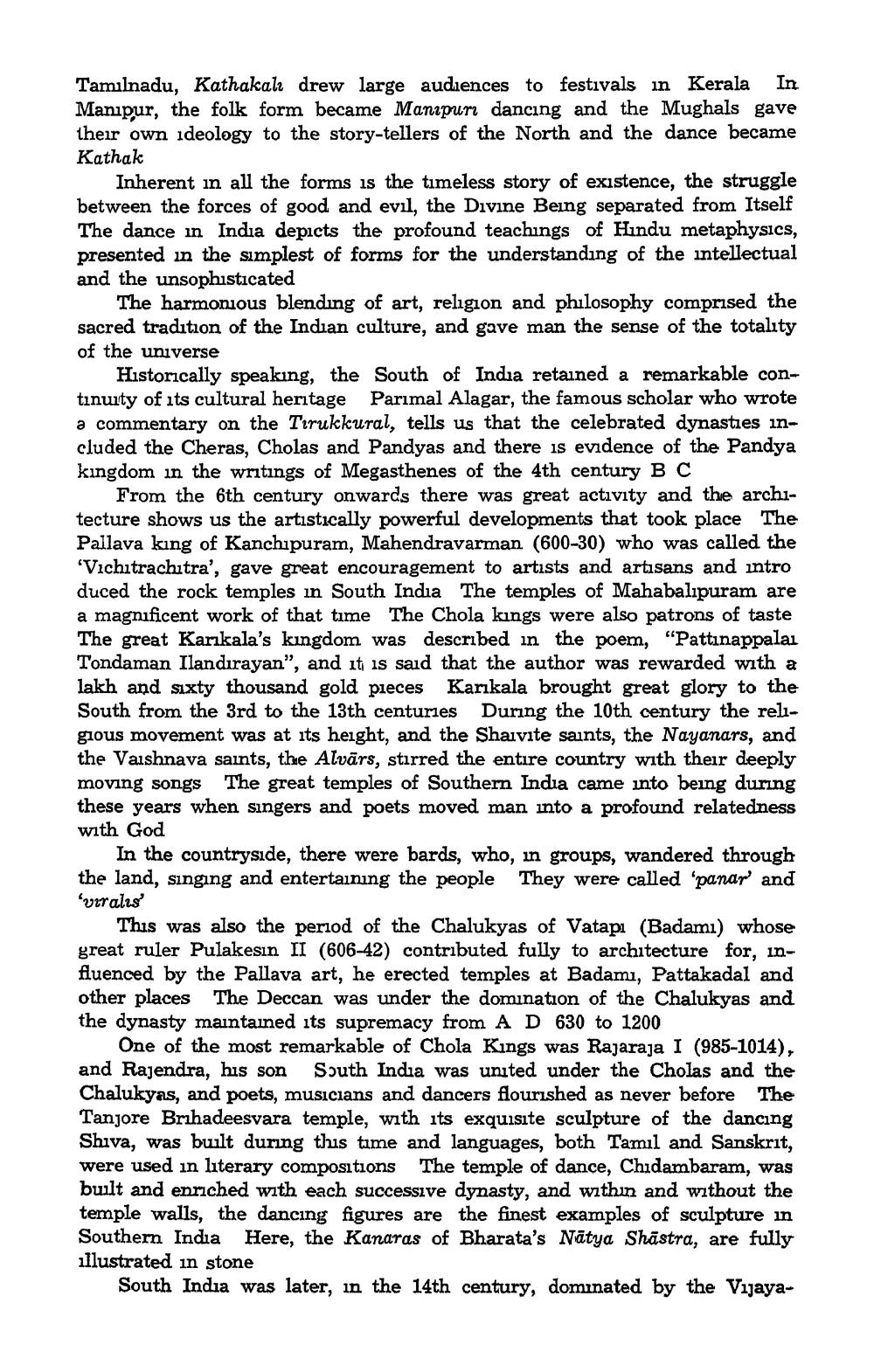Book Title: Sacred Dance of India Author(s): Mrinalini Sarabhai Publisher: Bharatiya Vidya Bhavan View full book textPage 7
________________ Tamilnadu, Kathakalz drew large audiences to festivals in Kerala In Manipur, the folk form became Manipuri dancing and the Mughals gave their own ideology to the story-tellers of the North and the dance became Kathak Inherent in all the forms is the timeless story of existence, the struggle between the forces of good and evil, the Divine Being separated from Itself The dance in India depicts the profound teachings of Hindu metaphysics, presented in the simplest of forms for the understanding of the intellectual and the unsophisticated The harmonious blending of art, religion and philosophy comprised the sacred tradition of the Indian culture, and gave man the sense of the totality of the universe Historically speaking, the South of India retained a remarkable continuity of its cultural heritage Parımal Alagar, the famous scholar who wrote a commentary on the Tirukkural, tells us that the celebrated dynasties included the Cheras, Cholas and Pandyas and there is evidence of the Pandya kingdom in the writings of Megasthenes of the 4th century BC From the 6th century onwards there was great activity and the architecture shows us the artistically powerful developments that took place The Pallava king of Kanchipuram, Mahendravarman (600-30) who was called the 'Vichitrachatra', gave great encouragement to artists and artisans and intro duced the rock temples in South India The temples of Mahabalipuram are a magnificent work of that time The Chola kings were also patrons of taste The great Karikala's kingdom was described in the poem, "Pattınappalai Tondaman Ilandırayan", and it is said that the author was rewarded with a lakh and sixty thousand gold pieces Karkala brought great glory to the South from the 3rd to the 13th centuries During the 10th century the religious movement was at its height, and the Shaivite saints, the Nayanars, and the Vaishnava saints, the Alvārs, stirred the entire country with their deeply moving songs The great temples of Southern India came into being during these years when singers and poets moved man into a profound relatedness with God In the countryside, there were bards, who, in groups, wandered through the land, singing and entertaining the people They were called 'panar and 'viralis" This was also the period of the Chalukyas of Vatapi (Badamı) whose great ruler Pulakesın II (606-42) contributed fully to architecture for, influenced by the Pallava art, he erected temples at Badamı, Pattakadal and other places The Deccan was under the domination of the Chalukyas and the dynasty maintained its supremacy from A D 630 to 1200 One of the most remarkable of Chola Kings was Rajaraja I (985-1014), and Rajendra, his son South India was united under the Cholas and the Chalukyas, and poets, musicians and dancers flourished as never before The Tanjore Brihadeesvara temple, with its exquisite sculpture of the dancing Shiva, was built during this time and languages, both Tamil and Sanskrit, were used in literary compositions The temple of dance, Chidambaram, was built and enriched with each successive dynasty, and within and without the temple walls, the dancing figures are the finest examples of sculpture in Southern India Here, the Kanaras of Bharata's Natya Shāstra, are fully illustrated in stone South India was later, in the 14th century, dominated by the VijayaPage Navigation
1 ... 5 6 7 8 9 10 11 12 13 14 15 16 17 18 19 20 21 22 23 24 25 26 27 28 29 30 31 32 33 34 35 36 37 38 39 40 41 42 43 44 45 46 47 48
